Unless you’re well-versed in the British conceptual art scene of the 1970s, Keith Arnatt’s name might not register the strongest recognition. Yet, Arnatt has a case for being one of the most influential British artists and photographers of his generation, pushing the boundaries of his mediums and going on to be a chief influence on the likes of Martin Parr and Paul Graham.
A major exhibition of his work, Absence of the Artist, is currently showing at Sprüth Magers in London, marking the years between 1967 and 1972 during which some of Arnatt’s most vital and enduring work was created.
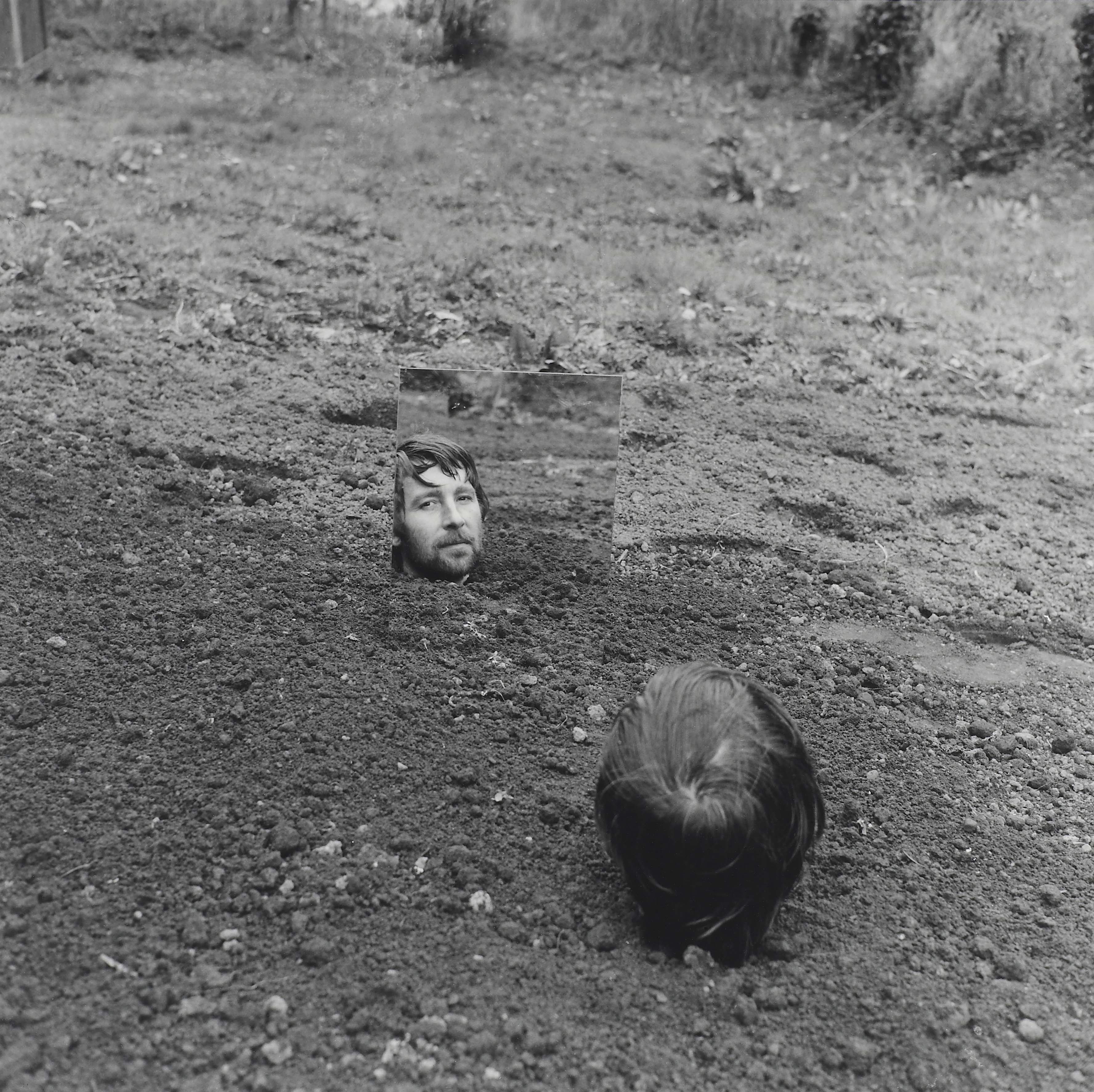
Today, artists and photographers freely cross the boundaries between what was once considered ‘art’ and ‘photography’. But Arnatt, who studied philosophy at Oxford and trained in drawing and painting at the Royal Academy School in London in the late 1950s, was a pioneer in bringing conceptual ideas from the sphere of art to photography.
The early phase of his career explored the boundaries between landscape and sculpture, echoing the work of artists like Richard Long and Hamish Fulton. It was when he decided to document his work that he noticed the creative possibilities of photography. As he later recalled in a 1993 interview with Susan Butler, “what intrigued me about that [the process of recording the artworks with photography] was the discrepancy between the imagined result and the actual result… So the photograph was to become instead of a second order work the first order work…the end product.”
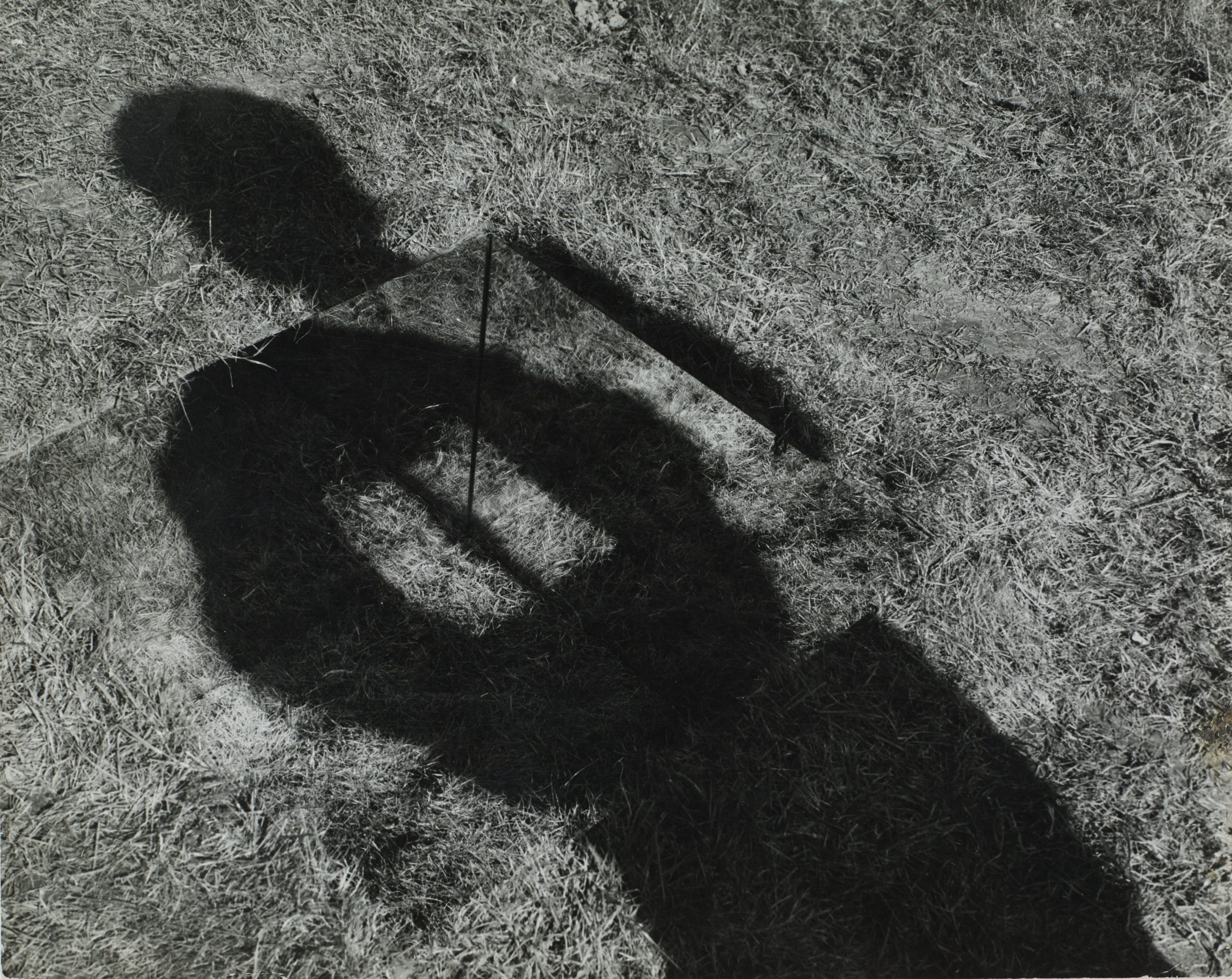
This was the turning point for Arnatt, and from 1972 he turned exclusively to photography. His switch to the then-unfashionable medium took the art establishment by surprise, but it was clear that he was exploring ideas that had links to his previous practice.
These ideas – acts of disappearance, the prospect of disintegration and the space created therein – found new vigour when expressed through image. As Ian Walker wrote in the catalogue essay for a 1989 exhibition, “Arnatt began to understand the ability of photography simultaneously to document what was there and transform it into something quite different… recording his presence at the point where it becomes absence.”
Arnatt’s preoccupation with impermanence dovetailed with the perceived reliability of photographic evidence but as his son Matthew tells the BJP,
“Keith’s work requires…the reliability [and] predictability of visual evidence and photographic documentation. The interesting unreliabilities are to do with its audience. In a way, Keith was completely un-bothered by impermanence: once you’ve had an idea, you’ve had it.”
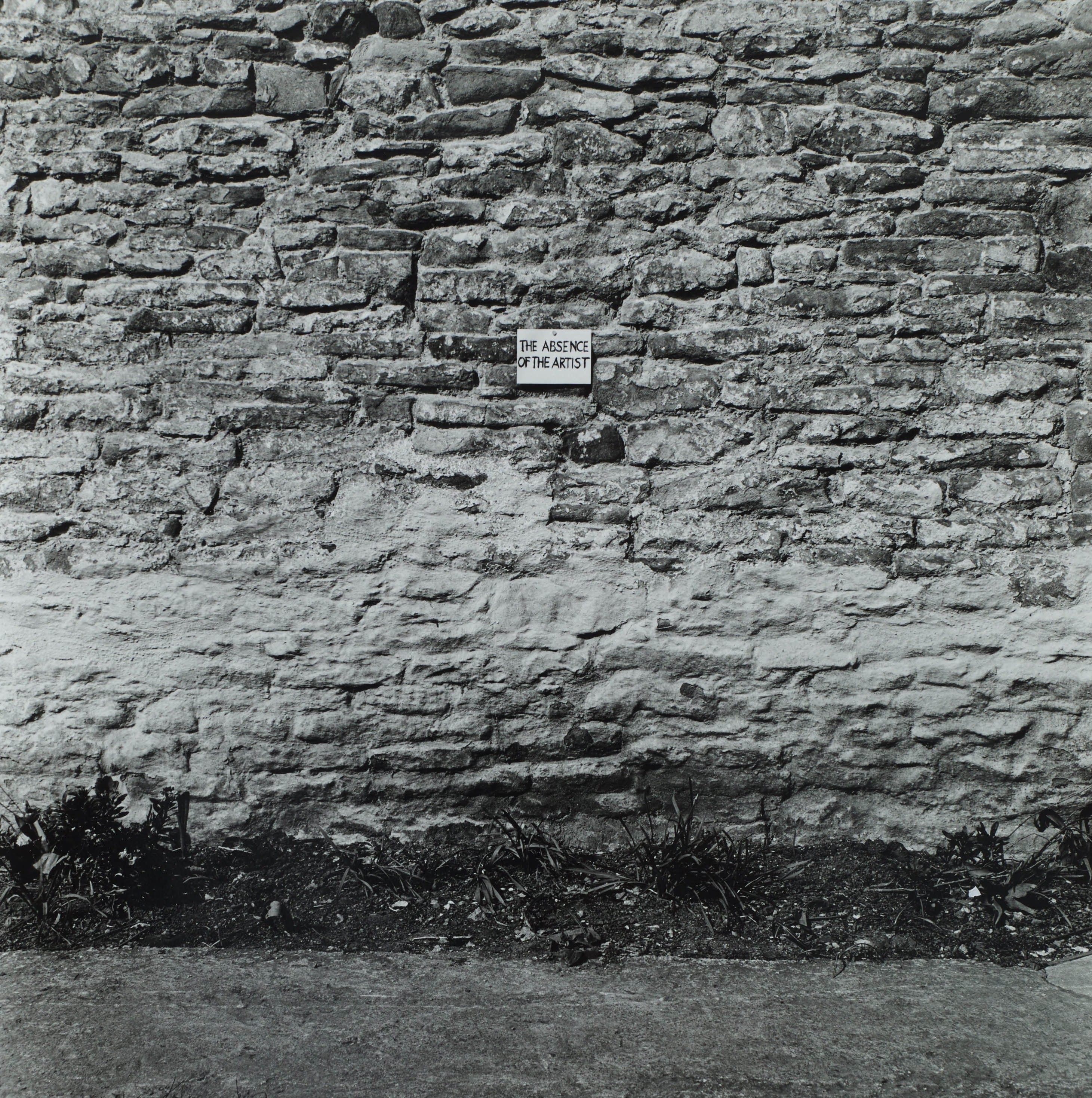
Arnatt’s attitude towards ‘being an artist’ vacillated between contempt and curiosity and this tension birthed a number of works, as Arnatt continually revisited this terrain to find new pockets of insight. The Absence of the Artist brings together a range of this work, and the title image is a pure distillation of his ambivalence and crucially, his sense of humour. A sign is nailed to a brick wall declaring the absence of the artist, yet by denying his presence he paradoxically announces himself, heightening his role.
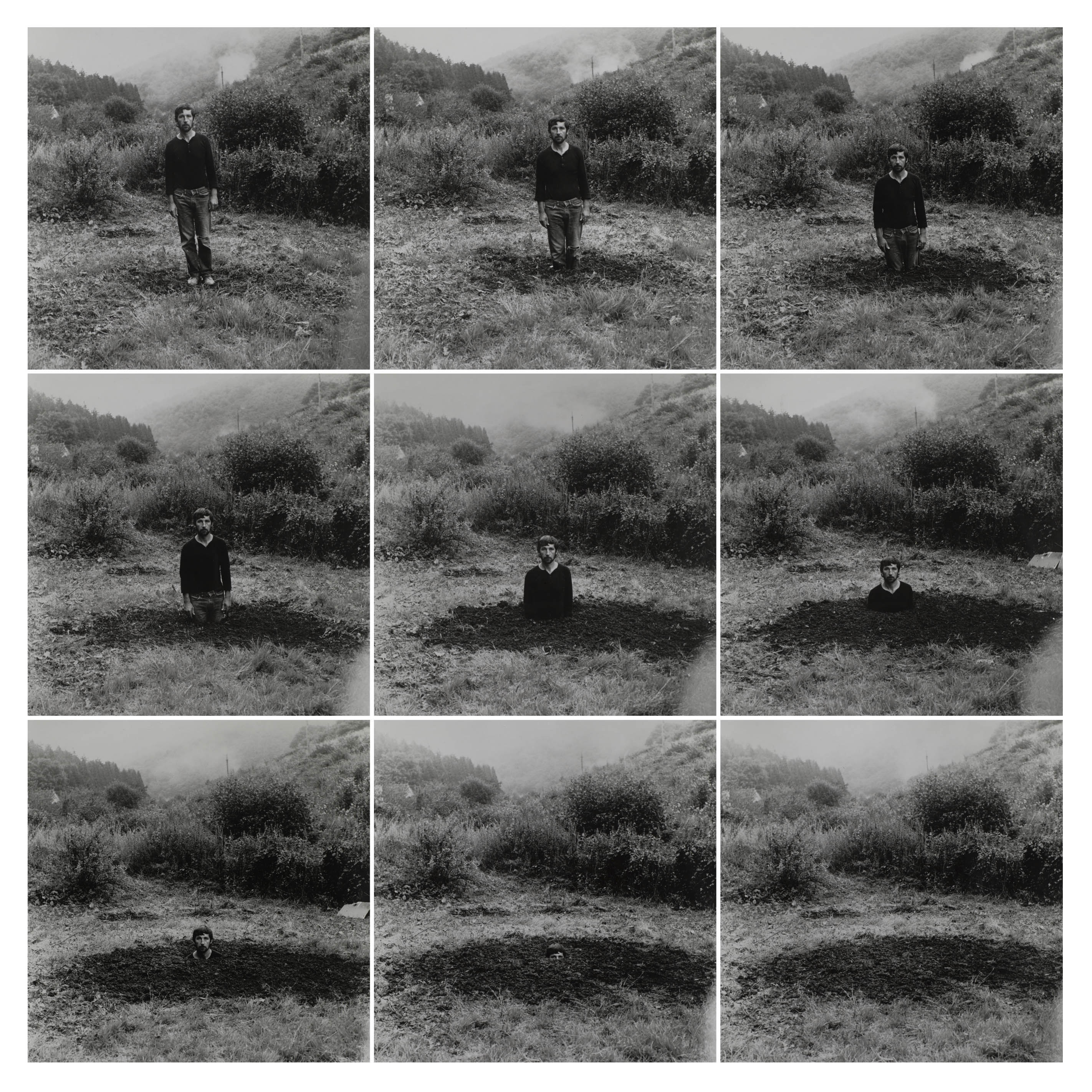
Self-Burial depicts Arnatt in a series of nine photographs, gradually sinking and eventually disappearing into the ground. The work referenced his fascination with the landscape but also, as he later wrote, “The continual reference to the disappearance of the art object suggested to me the eventual disappearance of the artist himself”.
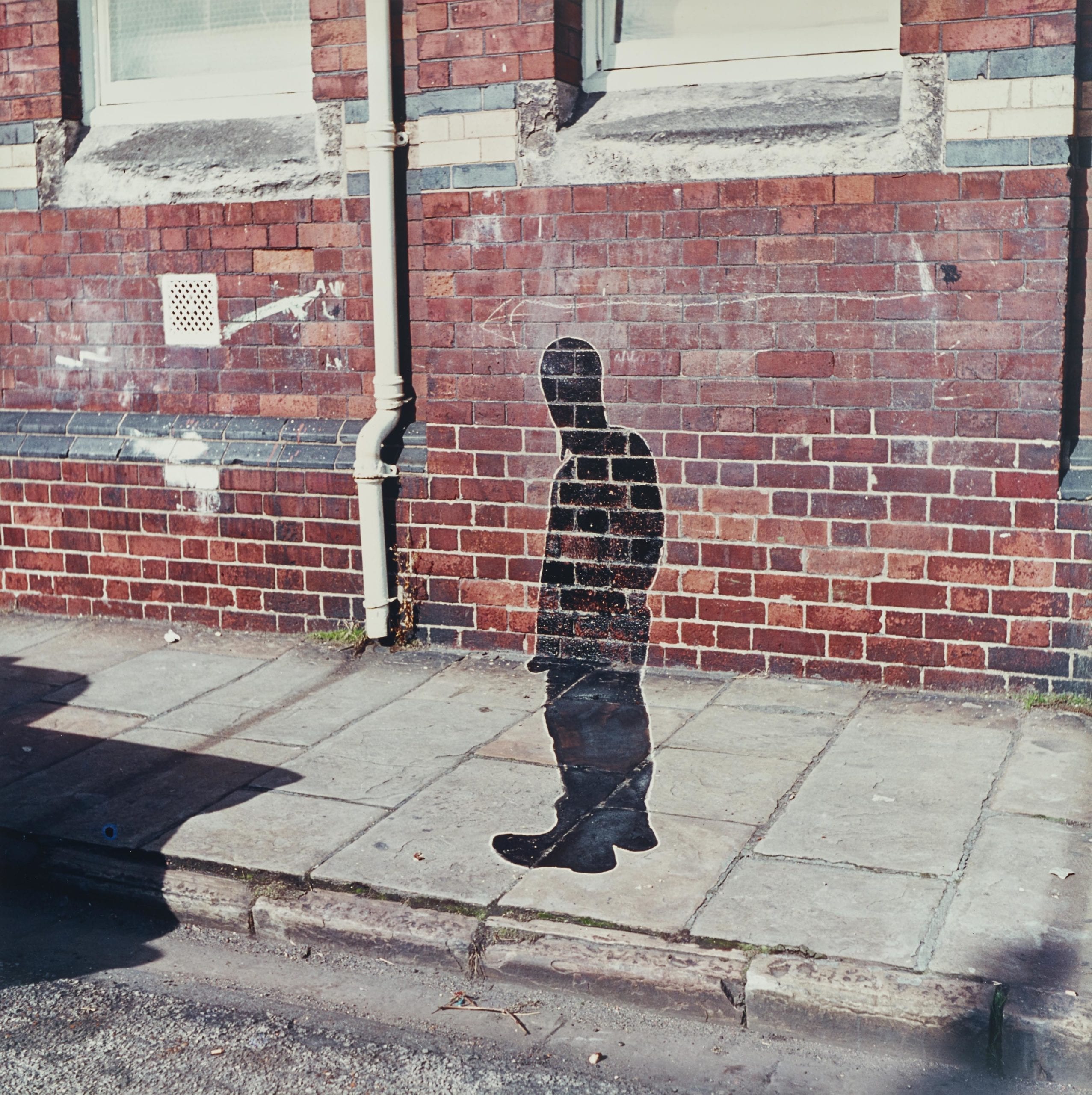
In Portrait of the Artist as a Shadow of his Former Self, Arnatt outlined the shadow he cast on the wall and the pavement in chalk, and then filled in the silhouette in semi-transparent paint. This conspicuous trace of the absence shifts an ephemeral moment to something more enduring, and the veracity of photographic documentation is left muddled.
In his lifetime, Arnatt’s reputation waxed and waned, but in recent years the enormous value and innovation in his work has become clear. Despite his conceptual background he also had a voracious appetite for photography, discovering the likes of Walker Evans, August Sander and Diane Arbus after befriending photographer David Hurn.
His indelible influence on a generation of photographers and the realm of conceptual photography is clear; in 2004 while guest-curating Rencontre d’Arles, Martin Parr outlined how Arnatt expanded the capacity for the medium. While Arnatt’s work could deal with the fleeting, he was always grounded in a clear-eyed philosophy. As he wrote, “…whatever else art is and whatever else it becomes, it is some tangible manifestation of ideas – surely that is the bottom line.”
Absence of the Artist was exhibited at Sprüth Magers London until the 26th September 2015. More information here.

